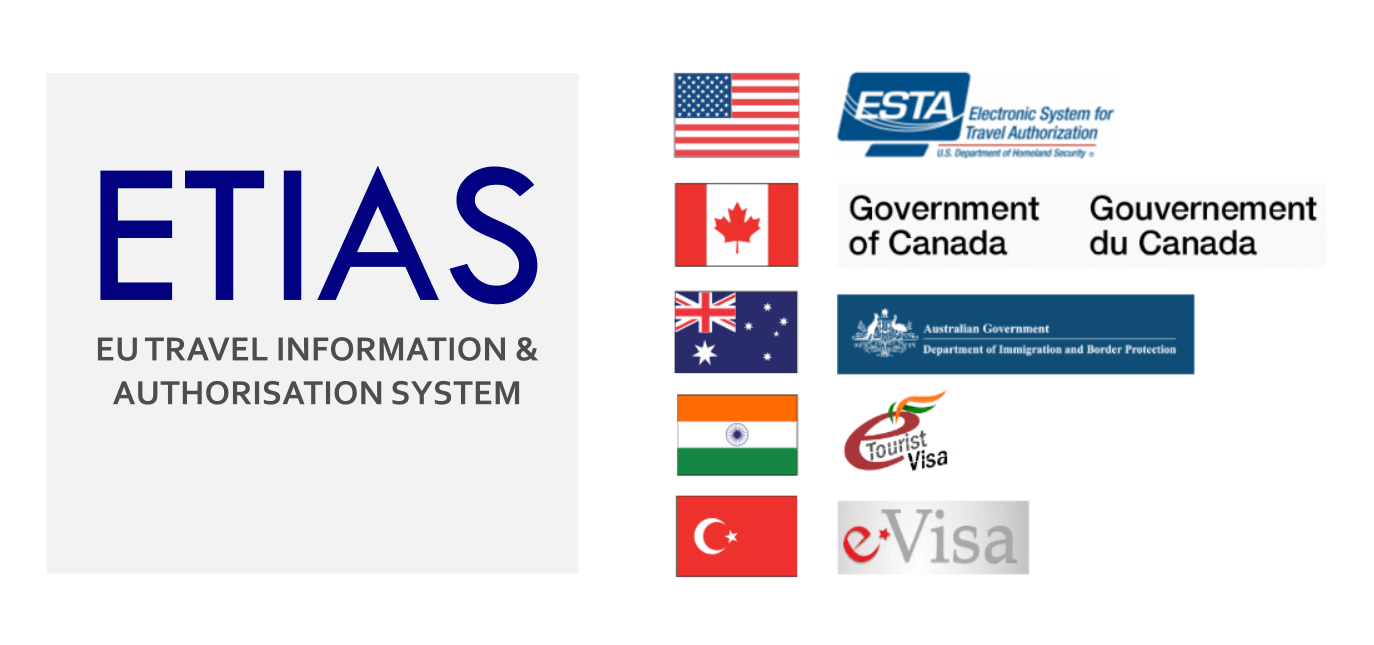Recent security concerns with terrorism and the migrant crisis have called for better management of who is entering EU borders. The EU has continuously declared its goal of making traveling within its borders a more secure experience. To reduce procedures and wait times, as well as address the security concerns, the European Commission (EC) has come up with a solution – European Travel Information and Authorization System (ETIAS).
What is ETIAS?
ETIAS stands for European Travel Information and Authorization System. It is a completely electronic system that allows and keeps track of visitors from countries who do not need a visa to enter the Schengen Zone. In a way, it resembles the U.S Electronic System for Travel Authorization (ESTA), which serves a similar purpose.
The ETIAS, besides being used for business and tourist purposes, will also allow people to visit the Schengen countries for medical and transit reasons. In addition, it will be mandatory for all countries that are Schengen visa-free.
Why ETIAS Authorization?
The main reason for the approval of the ETIAS authorization is security. With the increased risk of travelers worldwide, the EU wants to ensure safe travels in its countries. The ETIAS will decrease security concerns substantially through its information and data gathering systems.
However, besides making traveling more secure, the ETIAS authorization will also assist the EU countries and all travelers in the following ways:
- Reduce procedures and application times
- Improve the management of EU country borders
- Assist in detecting and decreasing crime and terrorism
- Impede irregular migration
- Reinforce the visa liberalization policy of the EU
ETIAS Countries
These are the European countries that will require a valid ETIAS upon arrival at their borders:
Austria, Belgium, the Czech Republic, Denmark, Estonia, Finland, France, Germany, Greece, Hungary, Iceland, Italy, Latvia, Liechtenstein, Lithuania, Luxembourg, Malta, the Netherlands, Norway, Poland, Portugal, Slovakia, Slovenia, Spain, Sweden, and Switzerland.
Who Will Need ETIAS?
As mentioned, the ETIAS targets citizens of countries who can enter the EU zone visa-free. Currently, 63 countries will need to get the ETIAS authorization. Until the launching of the system, more countries might be added to the list, but at the moment, all citizens of the above-mentioned countries will be obliged to obtain ETIAS authorization before entering any EU country.
How Will the ETIAS System Work?
Those who want to get approval will have to follow these steps to apply for ETIAS:
Ø Filling out the application form
The ETIAS application is expected to take about 10 minutes to fill out. It will be online so you will not have to go through paperwork. Depending on the country of citizenship that you choose, it will present you with several fields to fill.
Ø Submitting the application
When you complete the application, you will have to pay the fee and submit it.
If what you filled out on the application form is correct, and you are eligible and not risky for the ETIAS, then you will be approved. This whole procedure is expected to be completed in only a few minutes.
How Much Will ETIAS Cost?
The ETIAS will not burden your finances a lot. It is planned to have the ETIAS cost only €7 for each application. This is only valid for adults over 18 years old, as those under 18 will not have to pay any fees. You can pay the fee by debit or credit card. Immediately after you complete the payment, the ETIAS authorization will start processing.
How long is the ETIAS valid?
If approved, the ETIAS might be valid for 3 years or until the end of validity of the travel document registered during the application, whichever comes first. Whether you will get the first period of validity or the second depends on the system’s evaluation of your information and risk.
(Courtesy: www.schengenvisainfo.com)












